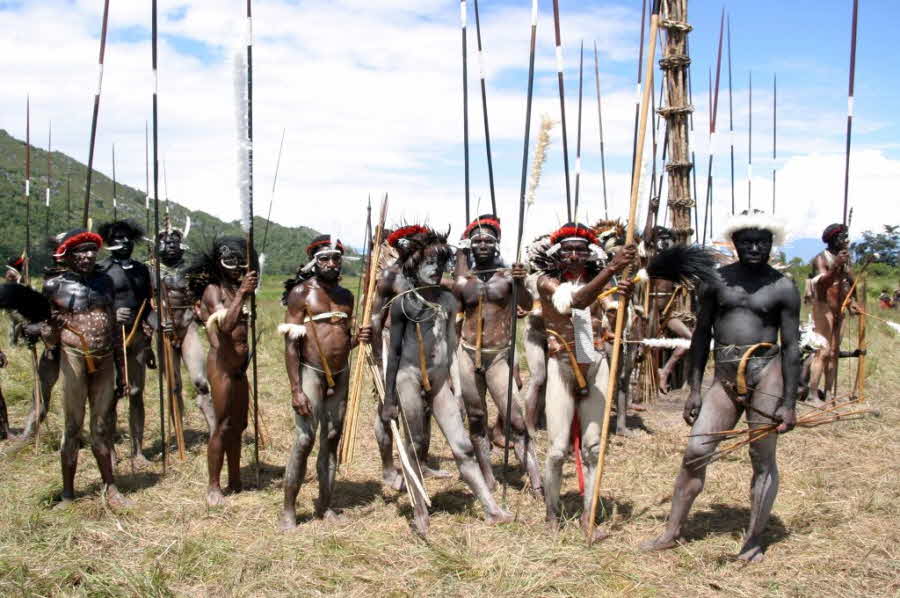파푸아의 단지(斷指) 풍습
OKOK

The practice of cutting fingers, also known as “okok,” was a traditional ritual among certain indigenous groups in Papua, located in the easternmost province of Indonesia on the island of New Guinea. The ritual was performed as a way of mourning the dead and was considered a sacred tradition that was passed down from generation to generation.
During the ritual, participants would cut off the tips of their fingers as a sign of grief and then present the cut fingers to the deceased as an offering. The act of cutting one’s own flesh was seen as a way of physically expressing the depth of one’s sorrow and grief.
It is important to note that the practice of cutting fingers has largely been discontinued in modern-day Papua, and the ritual is no longer performed in most communities. The ritual is considered to be a cultural artifact and has been recognized as a form of intangible cultural heritage by UNESCO.
In recent years, there have been efforts by the local communities to preserve and promote their cultural heritage, including traditional practices such as the finger-cutting ritual. However, it is important to approach these practices with sensitivity and respect, as they hold deep cultural significance for the people of Papua.
“오콕”이라고도 알려진 손가락을 자르는 행위는 뉴기니 섬의 인도네시아 최동단 지방에 위치한 파푸아의 특정 원주민 집단 사이의 전통 의식이었습니다.
이 의식은 죽은 자를 애도하는 방법으로 행해졌으며 대대로 전해지는 신성한 전통으로 여겨졌습니다. 의식 중에 참가자들은 슬픔의 표시로 손가락 끝을 자른 다음 잘린 손가락을 고인에게 제물로 바쳤습니다.
자신의 살을 베는 행위는 자신의 슬픔과 슬픔의 깊이를 육체적으로 표현하는 방법으로 여겨졌습니다.
현대 파푸아에서는 손가락을 베는 행위가 대부분 중단되었으며 대부분의 지역 사회에서 더 이상 의식이 행해지지 않는다는 점에 유의하는 것이 중요합니다.
이제 단지의식은 문화 유물로 간주되며 유네스코에 의해 무형 문화 유산의 한 형태로 인정되었습니다. 최근 몇 년 동안 지역 사회에서는 손가락 절단 의식과 같은 전통 관습을 포함하여 문화 유산을 보존하고 홍보하기 위한 시도가 있는 것으로 전해졌습니다.
그러나 이러한 관행은 파푸아 부족의 원주민들에게 깊은 문화적 의미를 지니고 있기 때문에 세심하고 존중하는 마음으로 접근하는 것이 중요합니다.
김현청 / brian@hyuncheong.kim
– 블루에이지 회장
– 콘텐츠 기획자, 브랜드 마스터
– 오지여행가, 국제구호개발 활동가
이 사이트에 게시된 글과 사진의 무단 전재와 무단 복제를 금합니다. 게시된 콘텐츠의 전부 또는 일부를 이용하시려면 반드시 출처를 밝히고, 상업적 목적으로 이용할 경우 저작권자의 서면 동의를 받아야 합니다.


